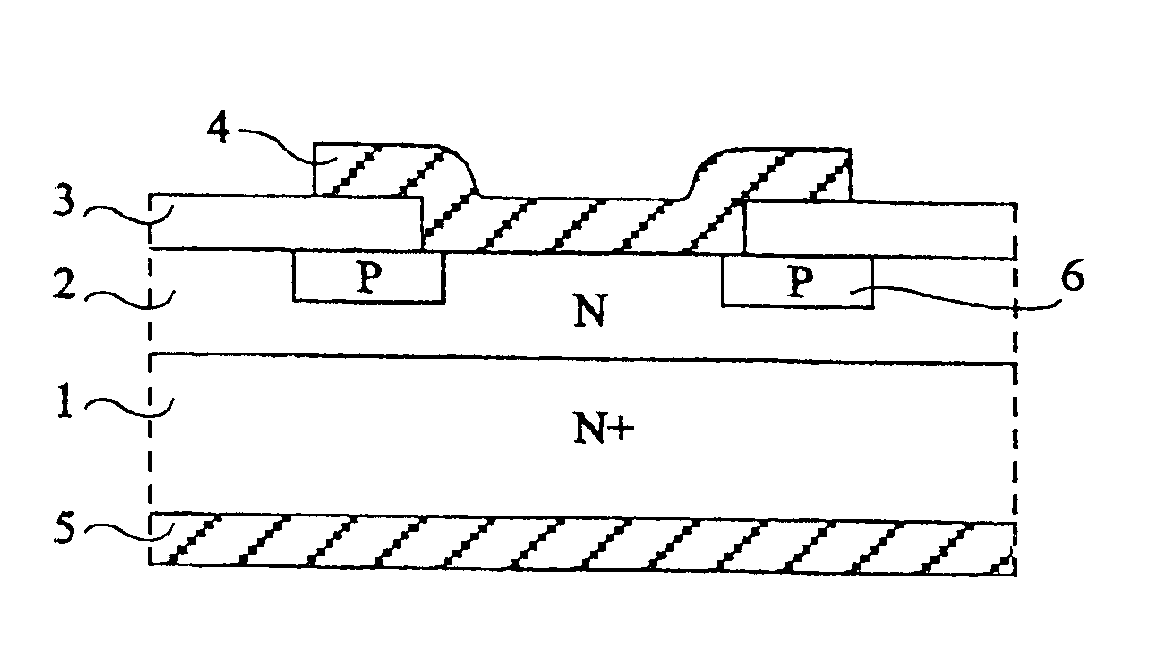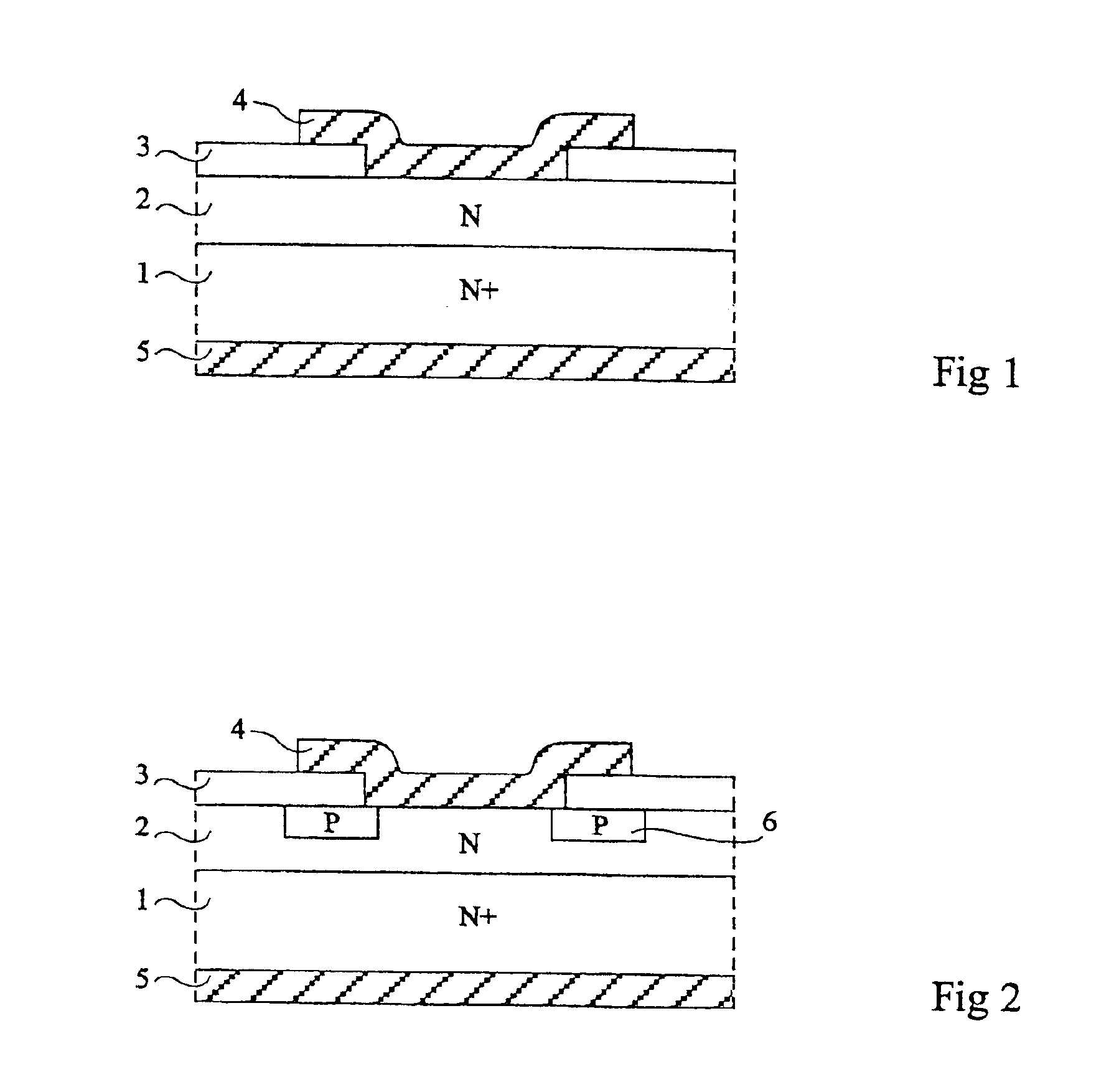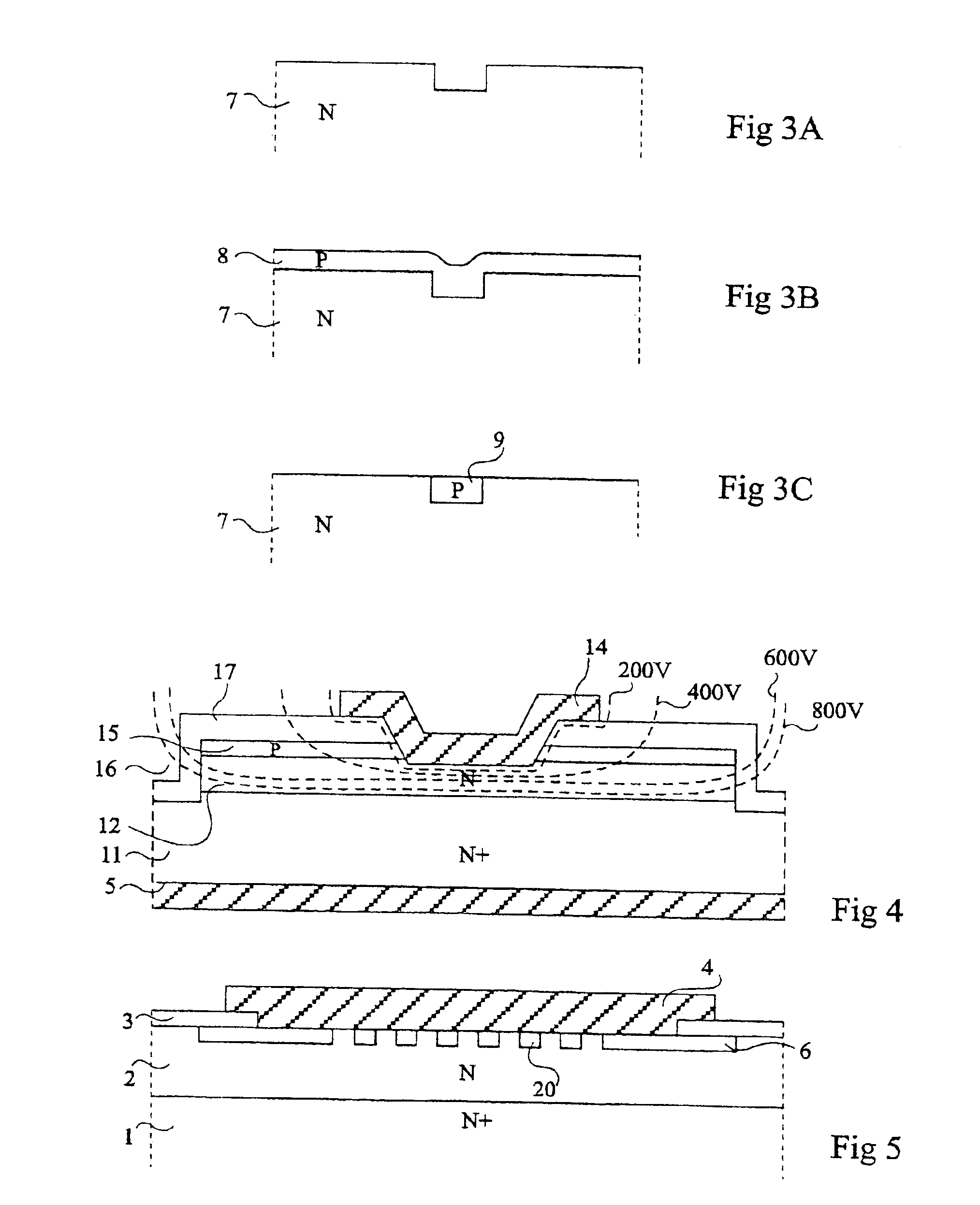Method for producing a schottky diode in silicon carbide
a technology of silicon carbide and diodes, which is applied in the manufacture of semiconductor devices, semiconductor/solid-state devices, electric devices, etc., can solve the problems of limiting the possible reverse breakdown voltage, the simple structure illustrated in fig. 1 is not desirable either, and the formation of such a p-type guard ring is not simply implementable. , to achieve the effect of high breakdown voltage and simple implementation
- Summary
- Abstract
- Description
- Claims
- Application Information
AI Technical Summary
Problems solved by technology
Method used
Image
Examples
Embodiment Construction
[0019]As usual in the field of semiconductor representation, in the various drawings, the various layers are not drawn to scale, either in their horizontal dimensions, or in their vertical dimensions.
[0020]As illustrated in FIGS. 3A to 3C, the present invention provides a succession of steps enabling formation of a doped area in a silicon carbide substrate without requiring use of very high temperatures.
[0021]At the step of FIG. 3A, a trench has been formed in a silicon carbide substrate 7. This trench has dimensions corresponding to those of the doped area which is desired to be formed and is formed by any adapted photolithographic etch method. Substrate 7 is a massive substrate or an epitaxial layer formed on a support.
[0022]At the step of FIG. 3B, a doped epitaxial layer 8 of the desired conductivity type, for example, of a type opposite to that of the substrate, has been formed. A P-type layer may for example be formed on an N-type substrate.
[0023]At the step of FIG. 3C, a plana...
PUM
| Property | Measurement | Unit |
|---|---|---|
| temperatures | aaaaa | aaaaa |
| breakdown voltage | aaaaa | aaaaa |
| breakdown voltage | aaaaa | aaaaa |
Abstract
Description
Claims
Application Information
 Login to View More
Login to View More - R&D
- Intellectual Property
- Life Sciences
- Materials
- Tech Scout
- Unparalleled Data Quality
- Higher Quality Content
- 60% Fewer Hallucinations
Browse by: Latest US Patents, China's latest patents, Technical Efficacy Thesaurus, Application Domain, Technology Topic, Popular Technical Reports.
© 2025 PatSnap. All rights reserved.Legal|Privacy policy|Modern Slavery Act Transparency Statement|Sitemap|About US| Contact US: help@patsnap.com



